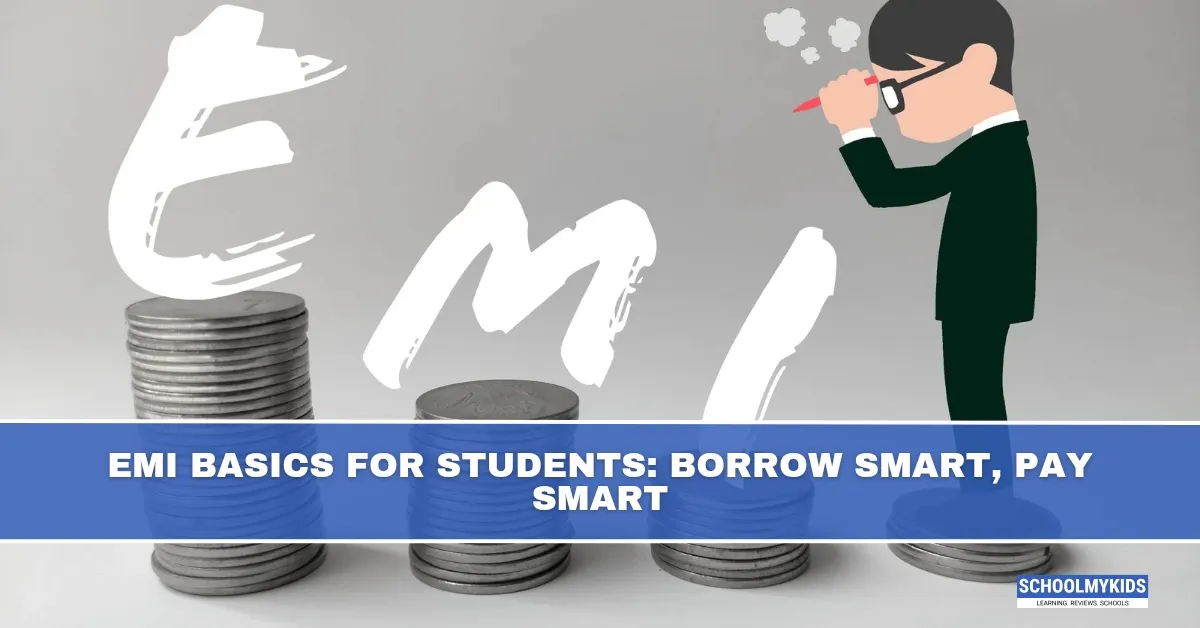For many students, education and lifestyle expenses often go beyond what family budgets can comfortably cover. Whether it’s for a laptop, online courses, coaching fees, or even study abroad expenses, loans and Equated Monthly Instalments (EMIs) have become a common financial tool. While EMIs make borrowing accessible and manageable, they also demand careful planning. Understanding the basics can help students borrow smart and pay smart.
What is an EMI?
An Equated Monthly Instalment (EMI) is a fixed payment that a borrower makes to a lender on a specific date each month. EMIs are structured so that over the repayment period, the loan principal and interest are both paid off in full.
In simple terms:
- Principal: The original amount borrowed.
- Interest: The cost of borrowing.
- Tenure: The time over which the loan is repaid.
The EMI combines principal + interest into equal monthly payments.
Why Students Opt for EMIs
- Manageable Payments: Instead of paying a large sum upfront, costs are spread over months or years.
- Access to Resources: Makes it easier to afford laptops, tuition fees, skill courses, or travel costs.
- Builds Financial Discipline: Regular repayment instills budgeting habits.
- Credit History: Responsible EMI repayment helps students build a positive credit score for future financial needs.
Common Types of Student EMIs
- Education Loans: Cover tuition fees, living expenses, and study materials.
- Consumer Durable Loans: For laptops, phones, or other essentials offered on easy EMIs.
- Credit Card EMIs: Purchases converted into monthly instalments by the bank.
- Personal Loans for Students: Flexible loans often used for coaching, travel, or emergencies.
Factors Affecting Your EMI
- Loan Amount: Higher loan = higher EMI.
- Interest Rate: Even a small change in rate affects your monthly outgo.
- Loan Tenure: Longer tenure reduces EMI size but increases overall interest paid.
- Processing Fees: Some lenders charge extra upfront costs.
Tips to Borrow Smart
- Borrow Only What You Need: Don’t overestimate your requirement.
- Compare Lenders: Look for student-friendly interest rates and flexible repayment options.
- Read the Fine Print: Check for hidden charges, penalties, or prepayment conditions.
- Avoid Multiple Loans: Too many EMIs can overwhelm a limited student budget.
- Use EMI Calculators: Online tools can help you estimate repayment before committing.
Tips to Pay Smart
- Prioritize EMI Payments: Always pay on or before the due date to avoid penalties.
- Set Reminders or Auto-Debit: Ensures you never miss payments.
- Plan a Budget: Allocate a portion of monthly allowance or income for EMIs.
- Prepay When Possible: Extra payments reduce overall interest burden.
- Build a Safety Net: Keep a small savings buffer for emergencies so you don’t miss an instalment.
Mistakes to Avoid
- Ignoring Interest Rates: Students often focus only on EMI size, not total repayment.
- Late Payments: Hurts credit score and attracts heavy penalties.
- Over-Borrowing: Taking unnecessary loans can trap you in long-term debt.
- Not Tracking Expenses: Without budgeting, EMIs can eat into essentials.
Conclusion
EMIs can be a helpful financial tool for students, but only if used wisely. Borrowing smart means assessing your real needs, comparing options, and choosing affordable repayment terms. Paying smart means staying disciplined, punctual, and financially aware. By following these principles, students can turn EMIs from a burden into a stepping stone toward financial independence.








Be the first one to comment on this story.